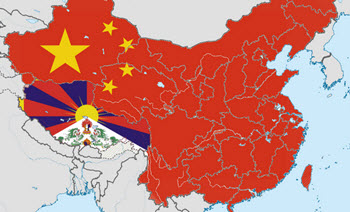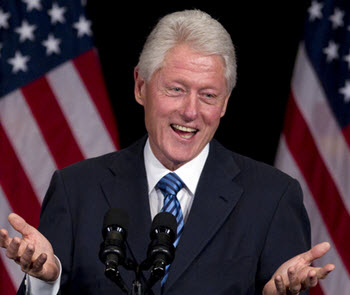Prior to 100 BC, Tibet has sought to be and become an independent state. Successive invasions by Britain, China, and Mongolia have interrupted this process over the centuries, and Tibet has always maintained its position. Tibetans have developed and kept their own religion, language, government, and laws despite the many disruptions. Occupation of Tibet and periodic control has never stopped the Tibetans from achieving this status. Since 1911 until China last invaded Tibet in 1949, they have successfully achieved full independence; however, China became overlord of Tibet and the Tibetans have not been able to practice full independence.
 Tibet and China Today
Tibet and China Today
For the past 34 years, Tibet has been trying to regain its status as a nation independent of China. Tibetans have launched over 60 campaigns to China for open and frank discussions in relation to gaining independence. The United States, the United Nations, and the European Union have sought to help facilitate meaningful discussions, but to no avail. China has insisted on denying any discussions on Tibet’s independence.
While the situation between Tibet and China continues, there are serious issues which are looming and happening to the Tibetan people. Self-immolation, which has been the main form of protest over the years, has increased. The Tibetan people have, in spite of Chinas’ reluctance to meaningful discussions, preferred to go the route of nonviolence to bring about their full independence. This is because of their strong belief and practice of Buddhism.
Buddhism, in essence, practices what is called the “Middle Way.” The concept recognizes life in its simplest form and respects life and peace for all living beings. It gives value, spiritual and dignified meaning to all. This is the route the Dalai Lama and all Tibetans see as the way forward between them and China. Successive leaders of governments agree and have been urging China to get back to discussions as means of solving the impasse between the two countries.

In April 1988, United States Secretary of State Madeleine Albright spoke to the Chinese President Jiang Zemin urging him to open discussions with the Dalai Lama. In June of that same year, President Clinton of the USA also urged President Jiang Zemin to open discussions with the Dalai Lama. Jiang Zemin indicated that there existed unofficial channels for discussion that were already in place. In 2001, the Dalai Lama reported to the AFP the non-response from Beijing for discussions after sending a delegation.
US President Bush, in September of 2002, signed into law a foreign policy bill that incorporates The Tibetan Policy Act. It expressed support for Tibet and directs the Secretary of State as well as the President to begin discussions with the Government of China for China to initiate dialogue with the Dalai Lama. There was some reaction to this as, between May and June 2003, both Governments met and had meaningful discussions. Further discussions were held in 2004 which gave the Dalai Lama hope for committed negotiations. In 2005, the Tibetan Government was still hopeful for further positive engagement; however, China still held fast to their policy of Tibet remaining in their control.
President Obama of the United States met with the Dalai Lama in February 2010 and agreed on the Buddhist approach to the “Middle Way” and its non-violence dealings with their century’s long neighbour, China. Successive Government entities have agreed on this approach and to date, the current Dalai Lama His Holiness still believes in a non-violent approach to any negotiations with China for reaching an amicable decision.
